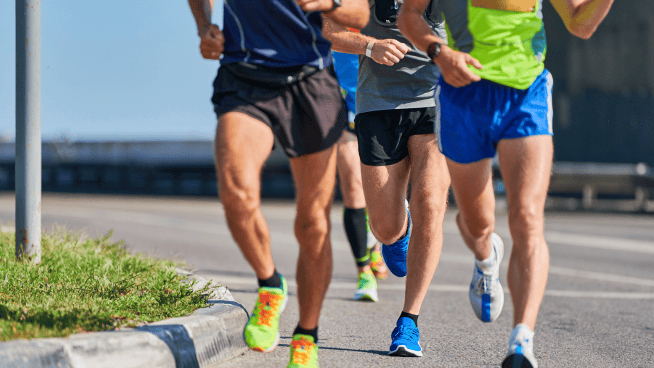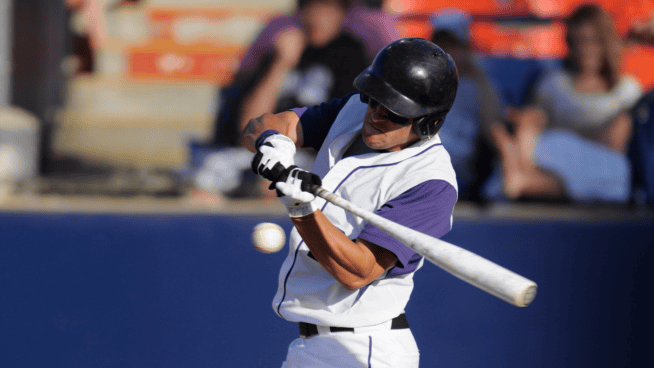Basketball Strength Workouts: Myths and Facts
There are many misconceptions and myths regarding basketball strength and conditioning. Many of these fallacies can decrease performance and increase chance of injury. By adhering to these myths, which aren’t based on facts, coaches can sabotage their players and wreck an athlete’s chance to hit his or her full potential.
Perhaps the biggest nonsense myth that many players and coaches believe (or claim to believe) is that basketball players don’t need to lift weights. These people say strength doesn’t matter for basketball players. They also believe their players will lose mobility or speed by incorporating a lifting routine. In my opinion that is simply crazy.
Look at any top college or pro basketball program, and you will see that they all follow lifting programs several days a week. Watch any NBA game. Do you think guys like LeBron James don’t lift? Have you seen Roy Hibbert’s workout? Although basketball players don’t need to look like football players, they do need to be powerful and explosive and have strong, durable bodies. Many basketball players have ectomorph body types, meaning they generally start off long and lean. This translates to players carrying less muscle in the larger muscle groups needed for basketball skills. Less functional muscle means less game. Players may have some ball-handling skills, but they get taken out of their game with even the slightest amount of physical contact.
Many players don’t like to work out with weights because with their skinny frames it may feel uncomfortable, particularly at first. But over time, they will realize the many benefits of a properly structured strength training routine. In most cases, basketball players would like to increase their basic skill set, meaning they would like to jump higher, run faster and be stronger in the paint. Unfortunately, many players, especially at the high school level, are lacking in all those attributes.
Although the performance boost from lifting is great, the most significant benefit may be reduced chance of injury. Muscle is the body’s ultimate defense system against many common skeletal and connective tissue injuries. Take the all-too-common ACL tear. The risk of an ACL injury drops the most when the muscles surrounding the knees are stronger. Any doctor will tell you that more functional muscle balance means less injury risk. That fact alone should be reason enough for every basketball coach to require his or her players to lift more, including basic movements like Squats and Deadlifts.
Jumping is crucial to any successful player’s game. I have said this before, so it should not come as a shock. Athletes who want to jump higher must get stronger in the right areas. The most important muscle groups for jumping and running are the hamstrings and glutes. Players cannot jump high or run fast without proper development in those areas.
The following exercises address only the legs, representing a fraction of the exercises we do. But they will provide a good foundation and starting point for basketball athletes.
Box Squat
Don’t just squat down and touch a box. Do actual box squats. Sit directly onto a box that allows your thighs to get parallel to the floor. During a true Box Squat, you should sit down on a box or bench, relax your hips and hamstrings, then contract them to stand up. If you can only do one exercise, this is the one to do.
Bulgarian Split Squats
Standing in front of a bench, place one foot behind you on the bench with your shoelaces facing down. Bend your front knee so you are basically doing a Single-Leg Squat. At the bottom of the movement, make sure your front knee does not extend out over your foot. Ideally, your front shin should be straight up and down, perpendicular to the floor.
Hamstring Band Curl
Take a band and choke it around a fixed object like a weight machine, keeping it about 6 inches off the ground. Sitting on a bench facing the band, put it around your ankles and simply curl it in. Try to keep your feet about 3 inches off the ground for the entire movement. Be sure to pull your feet well underneath you when you curl them in. To increase difficulty, move the bench further away from the anchor point.
In all of these movements, mix up the number of sets and repetitions. Do both low rep sets with heavier weight and high rep sets with lighter weight to train your body across the full spectrum of strength. Understanding this approach will help you stay healthy and improve your game over time.
Remember that great athletes are built over time, not overnight. Consistency in your training is key. You must be willing to spend the time to work out correctly. It should become as much a part of your training as your ball skills. For some players, it might even be more important. You must work as hard on your overall athleticism as you do on sport-specific skills.
Read more:
[cf]skyword_tracking_tag[/cf]RECOMMENDED FOR YOU
MOST POPULAR
Basketball Strength Workouts: Myths and Facts
There are many misconceptions and myths regarding basketball strength and conditioning. Many of these fallacies can decrease performance and increase chance of injury. By adhering to these myths, which aren’t based on facts, coaches can sabotage their players and wreck an athlete’s chance to hit his or her full potential.
Perhaps the biggest nonsense myth that many players and coaches believe (or claim to believe) is that basketball players don’t need to lift weights. These people say strength doesn’t matter for basketball players. They also believe their players will lose mobility or speed by incorporating a lifting routine. In my opinion that is simply crazy.
Look at any top college or pro basketball program, and you will see that they all follow lifting programs several days a week. Watch any NBA game. Do you think guys like LeBron James don’t lift? Have you seen Roy Hibbert’s workout? Although basketball players don’t need to look like football players, they do need to be powerful and explosive and have strong, durable bodies. Many basketball players have ectomorph body types, meaning they generally start off long and lean. This translates to players carrying less muscle in the larger muscle groups needed for basketball skills. Less functional muscle means less game. Players may have some ball-handling skills, but they get taken out of their game with even the slightest amount of physical contact.
Many players don’t like to work out with weights because with their skinny frames it may feel uncomfortable, particularly at first. But over time, they will realize the many benefits of a properly structured strength training routine. In most cases, basketball players would like to increase their basic skill set, meaning they would like to jump higher, run faster and be stronger in the paint. Unfortunately, many players, especially at the high school level, are lacking in all those attributes.
Although the performance boost from lifting is great, the most significant benefit may be reduced chance of injury. Muscle is the body’s ultimate defense system against many common skeletal and connective tissue injuries. Take the all-too-common ACL tear. The risk of an ACL injury drops the most when the muscles surrounding the knees are stronger. Any doctor will tell you that more functional muscle balance means less injury risk. That fact alone should be reason enough for every basketball coach to require his or her players to lift more, including basic movements like Squats and Deadlifts.
Jumping is crucial to any successful player’s game. I have said this before, so it should not come as a shock. Athletes who want to jump higher must get stronger in the right areas. The most important muscle groups for jumping and running are the hamstrings and glutes. Players cannot jump high or run fast without proper development in those areas.
The following exercises address only the legs, representing a fraction of the exercises we do. But they will provide a good foundation and starting point for basketball athletes.
Box Squat
Don’t just squat down and touch a box. Do actual box squats. Sit directly onto a box that allows your thighs to get parallel to the floor. During a true Box Squat, you should sit down on a box or bench, relax your hips and hamstrings, then contract them to stand up. If you can only do one exercise, this is the one to do.
Bulgarian Split Squats
Standing in front of a bench, place one foot behind you on the bench with your shoelaces facing down. Bend your front knee so you are basically doing a Single-Leg Squat. At the bottom of the movement, make sure your front knee does not extend out over your foot. Ideally, your front shin should be straight up and down, perpendicular to the floor.
Hamstring Band Curl
Take a band and choke it around a fixed object like a weight machine, keeping it about 6 inches off the ground. Sitting on a bench facing the band, put it around your ankles and simply curl it in. Try to keep your feet about 3 inches off the ground for the entire movement. Be sure to pull your feet well underneath you when you curl them in. To increase difficulty, move the bench further away from the anchor point.
In all of these movements, mix up the number of sets and repetitions. Do both low rep sets with heavier weight and high rep sets with lighter weight to train your body across the full spectrum of strength. Understanding this approach will help you stay healthy and improve your game over time.
Remember that great athletes are built over time, not overnight. Consistency in your training is key. You must be willing to spend the time to work out correctly. It should become as much a part of your training as your ball skills. For some players, it might even be more important. You must work as hard on your overall athleticism as you do on sport-specific skills.
Read more:
[cf]skyword_tracking_tag[/cf]










